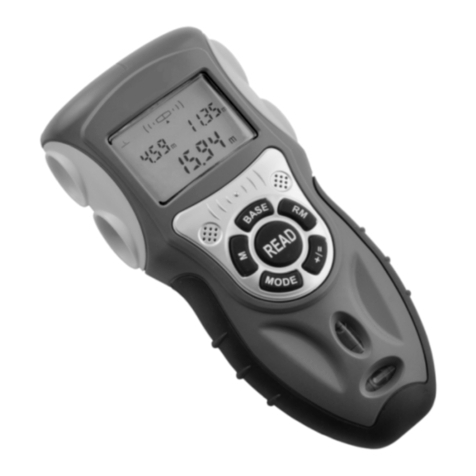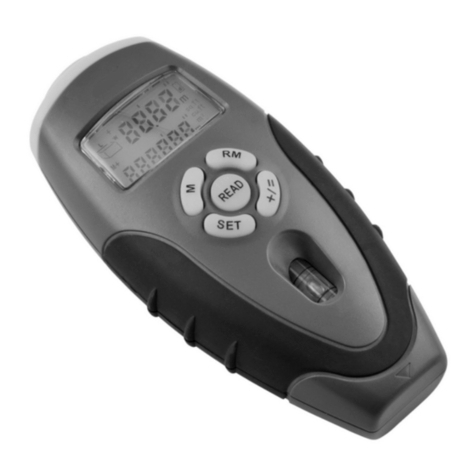
5 in 1 Multifunction Gauge
Model: KC-109A
OVERVIEW
KC-109A 5 in 1 multifunction gauge used integration design, which could achieve distance
measurement, stud detection, laser mark, etc. Tool adopts the LCD screen with backlight, which can
show various measure results, it is easy to operate and light to carry. It is an ideal tool for building and
decoration industries (for example, real estate agent, upholstery designer and craftsman, etc.)
Distance measurement: The tool can effectively measure object’s distance within 16 meters. It
contains the functions of sound indication for pressing key, temperature display and memory, which can
conduct consecutive measurements, automatic area and volume calculation. Convenient location and
level bubble assistant locating function can bring your work to a new level.
Stud detection: The tool can detect the position of joists, AC live wires or metals. It will calibrate
automatically after turning on. Select mode for joists, AC live wires or metals detection by setting the
mode switch. Once approaching the edges of joists, AC live wires or metals are detected, the scanner
will send out sound indication and you can easily mark the central position of the measured surface
through the marker slot on top of the tool with pencil. The function of alarming for AC live wires will
duly remind you of noticing whether there are AC live wires behind the wall, no matter functional
switch is set on joists or metal.
Laser mark function: The tool can generate a visible red laser line on the surface of objects. It is
convenient for you to choose the desired position while constructing. The tool also has the pin fixation
function for using on the wall.
KC-109A Multifunction gauge is a Class 2 laser tool conforming to the EN 60825-1:1994+A1:
2002+A2:2001 safety rule.
SAFETY INSTRUCTIONS
Failure to follow the instructions listed below may cause personal injury.
●Read and understand all instructions prior to any operation.
●Do not remove any label from the tool.
●Do not operate the tool with the presence of flammable/explosive gases.
●Do not operate the laser tool around the children or allow children to operate the laser tool, failure to
do so will injure eyes of children.
●Do not stare into the laser beam.
●Do not project the laser beam directly into the eyes of others.
●Do not set up the tool at eye level or operate the tool on or near a reflective surface, as the laser
beam could be projected into your eyes or the eyes of others.
●Do not observe the laser beam by using optical tools such as binoculars and magnifying glass.
●Operate with care because the pin is sharp.
1





























